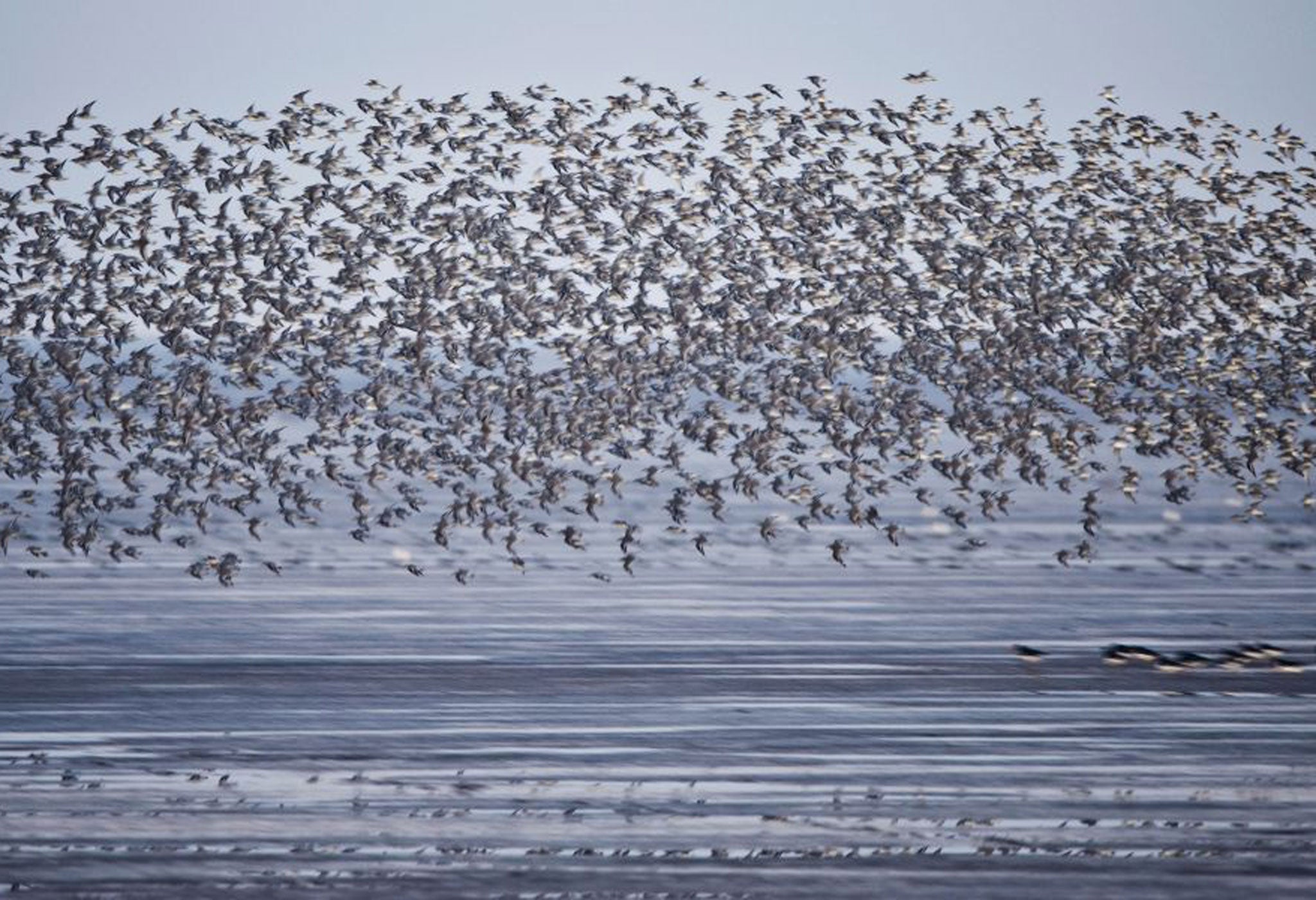Thousands of knot in flight are one of autumn’s great spectacles
A murmuration of these birds is among the most beautiful sights in Britain

You don’t get mist and wind together, do you? You encounter mist. Or you encounter wind. Not both at the same time. But here was the strangest thing – the noise of the wind, a great swishing sound, a giant whispering, coming from inside a mist bank.
It was not long after dawn on Monday. The sky above was a piercingly clear blue but the mist still draped itself over the land and over the vast immensity of the Wash, whose mudflats were rapidly turning into mirrors as they were flooded by the incoming tide. Around 50 of us early risers were standing on the beach, watching the offshore mist bank intently, the one from which the sound was emanating.
As we gazed at it, somebody hissed “Here they come!” and the swishing got louder and then out of the mist burst a cloud, a swirling, eddying cloud drifting rapidly towards us, and the sound became a spectacle – one of the great wildlife spectacles of Britain.
It was a blizzard of birds, and the swishing was the sound of wings beating together – 10,000 pairs of wings, 20,000, maybe 25,000, perhaps even more. They were uncountable and as they reached the shore and passed over our heads the blue of the sky was completely eclipsed by flickering white, by the white of the birds’ bellies.
They were knot. (That’s a plural). Knot are smallish, dumpy sandpipers which breed in the High Arctic and winter in Africa in places like Mauretania, and on their way between the two they stop off to refuel in several of the larger British estuaries, such as the Dee and the Ribble, and here in the Wash, the largest of all.
When they do, they congregate in astonishing numbers and colossal flocks can be observed, in September especially, containing more than 100,000 birds; and if you go at the right moment – when a very high tide pushes them completely off the mudflats – you can watch these flocks dance in the sky, snaking and shifting together in mesmerising co-ordinated twirls, as they move en masse on to the land.
The scientific name of the knot is Calidris canutus and the bird is thought to be named after King Canute, or Cnut, the Danish king of England and Scandinavia in the 11th century, who, legend has it, set his throne on the beach and commanded the waves of the incoming tide not to wet his feet – in vain. (The true point of the story is allegedly that Canute was showing to his flattering courtiers that only God was truly all-powerful).
Certainly, in the Wash on Monday, the knot resisted the tide’s advance later than any other wading birds, and as we walked along the Norfolk shore from the car park at Snettisham we had a glimpse of them roosting out on the mudflats, when the mist briefly lifted.
It was one of those revelatory moments beloved of early Hollywood film directors, when the camera crests a ridge and discloses a whole army in the field. Here it was an army of oystercatchers, plump black and white waders with scarlet bills: I estimated there must have been at least 8,000 of them massed together about a quarter of a mile offshore. Then the mist lifted further and behind the oystercatchers were the knot, at least three times as many; an endless grey carpet fading into the distance.
As the tide spread in, waders everywhere were coming ashore, as individuals or in small groups, shooting overhead and calling, redshank and greenshank, black-tailed and bar-tailed godwits, dunlin and ringed plovers. Then eventually the oystercatchers took flight, in bigger of flocks of 100 or 200 birds, and streamed on to the land.
We watched and waited in silence for the finale. And then at last, the enormous murmuration, the giant whispering, coming from within the mist.
You think leaves turning gold make the great spectacle of autumn? You should see the knot.
Subscribe to Independent Premium to bookmark this article
Want to bookmark your favourite articles and stories to read or reference later? Start your Independent Premium subscription today.

Join our commenting forum
Join thought-provoking conversations, follow other Independent readers and see their replies